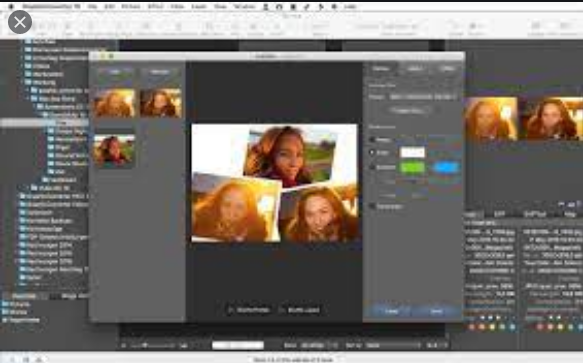GraphicConverter 10: A REVIEW
GraphicConverter 10 is a powerful tool that does not just convert your image file formats as the name implies, but does so much more. It functions as an image editor and photo browser as well. This tool supports batch file conversions and several file formats. It is a must-have for anyone working with photos.
GraphicConverter 10 Pros & Cons
There is a lot to like about this latest version of GraphicConverter:
Pros
- New facial recognition.
- Collage creation.
- Non-destructive editing.
- Displays EXIF data below thumbnails in the browser.
- Batch conversions.
Con
- Multiple windows and modes are distracting.
Using GraphicConverter
GraphicConverter has just about every feature and capability known in the graphics field – converter, editor, browser.
GraphicConverter has multiple methods of opening one or more images. Using the Open command, you can select one or more images that will be opened directly into the GraphicConverter editor. You can also choose to open the browser, and have images within various folders displayed as thumbnails, along with ratings, Finder tags, EXIF data, and other relevant information.
You can also have both modes operating at once; open an image directly to the editor, and have the browser open to look through a folder. Because the editor and the browser aren’t tied together but are two separate windows, you can use the two modes independently of each other.
- The Browser
The browser is divided into three panes, plus a toolbar across the top of the browser window. The left-hand pane contains the folder hierarchy that you’re browsing, allowing you to quickly move around your Mac’s file system to work with images. There’s also a Favorites area, which you can use to keep the folders you access most often just a click away.
The center pane provides a thumbnail view of the contents of a selected folder. This may be many images, but can also include folder and document icons. Clicking an image in the center pane opens the image in the GraphicConverter editor.
The right-hand pane contains a large thumbnail of the selected image, along with various types of information about the image. This includes the usual file image you would see in the Finder’s Get Info view, as well as EXIF data and a map showing location information.
You’ll also find options to display an image’s exposure histogram.
- The Editor
The GraphicConverter editor provides a large window for performing basic image edits, including adjusting brightness, contrast, saturation, gamma, sharpness, levels, shadows, highlights, and more. The editor includes the usual automatic correction capabilities and a long list of effects and filters that can be applied.
You’ll also find tools for directly manipulating an image, including text tools, pens and brushes, stamps, and erasers; just about all the tools you’d expect, all nicely organized on a tool palette you can position anywhere on your screen.
The Cocooner
The Cocooner is a special editing mode that allows you to perform non-destructive edits that are then used to create a new version of the image you’re working on, leaving the original untouched.
The Cocooner works by creating a data file that contains the edits that will be applied to an image. When you’re satisfied with the results, click the Export button, and a new version of the image will be created, leaving both the untouched original and the modified version present in the same folder.
Cocooning is a great method of editing, but at the moment it’s pretty basic. Very few of the normal editing features are supported in the Cocooner environment. More editing capabilities in this corner will be a big plus.
- Converting
Converting remains the strong point of GraphicConverter, with support for the largest number of image file formats in one app. While you can use the Save As command to convert the image you’re currently viewing into a different graphic image format, the much more powerful Convert and Modify command allows you to select one or more images, or entire folders, to batch process all at the same time.
One of the conversion features that can be very useful when working with a group of photographers who are delivering images to you, or when you need to batch convert a number of images, is Automatic Conversion. With Automatic Conversion, you specify a folder to be used for input, a folder to be used for output, and the options and format you wish to use in the conversion process.
With Auto Conversion set up, any image that is added to the specified input folder will automatically be converted and dropped into the output folder.
Review
GraphicConverter is a valuable tool for photographers. It can perform just about any type of conversion you can think of, has a very usable image browser, and an image editor that can take care of routine editing needs. It can also automate a wide range of routine image manipulation. You have more control over how you want to save your photos than with most other image editors.
GraphicConverter 10 costs $39.95. A demo is available.
graphic converter windows
graphic converter app
graphic converter iPhone
graphic converter review
graphic converter 7
graphic converter 6
graphic converter 6 download
download graphic converter 10


